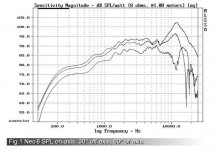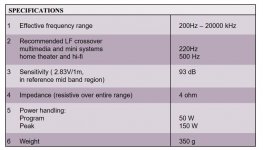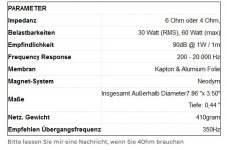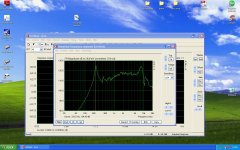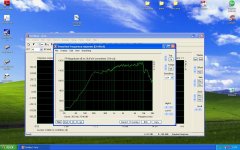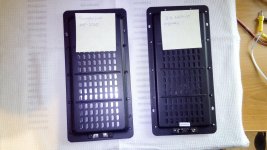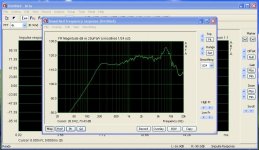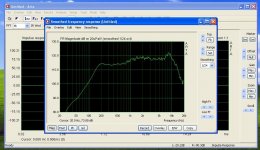I have found one China company named sounderlink is selling Bohlender Graebener NEO 10, NEO3 and NEO 8 Planar Transducer, I want to know how is the products quality. Does anyone have use this one to DIY your audio system?
NEO-3
Sounderlink 1 PC Diy monitor audio flat Hi-Fi speaker planar transducer ribbon tweeter with open back AMT-300-01 &NEO-3PDR - Sounderlink professional pro driver and speakers
Sounerlink 1 PC Diy monitor audio flat speaker planar transducer ribbon tweeter with back cup AMT-300-02 &NEO-3PDRW - Sounderlink professional pro driver and speakers
NEO 8
Sounderlink 1 PC AMT-920 NEO8 flat speaker high power ribbon tweeter HiFi planar transducer 4 and 6Ohm - Sounderlink professional pro driver and speakers
NEO 10
SounderLink AMT-2560 &Neo-10 ribbon tweeter Planar Transducer - Sounderlink professional pro driver and speakers
NEO-3
Sounderlink 1 PC Diy monitor audio flat Hi-Fi speaker planar transducer ribbon tweeter with open back AMT-300-01 &NEO-3PDR - Sounderlink professional pro driver and speakers
Sounerlink 1 PC Diy monitor audio flat speaker planar transducer ribbon tweeter with back cup AMT-300-02 &NEO-3PDRW - Sounderlink professional pro driver and speakers
NEO 8
Sounderlink 1 PC AMT-920 NEO8 flat speaker high power ribbon tweeter HiFi planar transducer 4 and 6Ohm - Sounderlink professional pro driver and speakers
NEO 10
SounderLink AMT-2560 &Neo-10 ribbon tweeter Planar Transducer - Sounderlink professional pro driver and speakers
the are only 30W RMS / 60W Music Power and not 50W/100W like the B&G that Parts-express are selling...
and their sensitivity is 90db and not 93db like B&G...
but at their prices you can buy almost 4 drives for the price of a single B&G so i guess you can use lots of them...
and their sensitivity is 90db and not 93db like B&G...
but at their prices you can buy almost 4 drives for the price of a single B&G so i guess you can use lots of them...
the are only 30W RMS / 60W Music Power and not 50W/100W like the B&G that Parts-express are selling...
and their sensitivity is 90db and not 93db like B&G...
The B&G NEO 8 is 4 Ohm and measured at 2,83V (2W), the Sounderlink 1 PC is measured at actual 1W/1m. The response of the B&G shows you'll only get the 93dB/2,83V from ~1,7-2kHz up. At the suggested crossover frequencies of 220Hz and 500Hz you'll only get 85dB respectively 87dB. On 2W, that is because it's 4 Ohm. That means, you'll lose a lot of spl and can't use the higher efficiency at all. The Sounderlink is available in 4 Ohm too.
The B&G is stating 50W PROGRAM which translates to -3dB = 25W rms. Compared to the 30W (that is at >350Hz) I doubt there's much difference in real life scenarios. Much more important is if the distortion and response is on par or not. The B&G got high order distortion quickly with rising spl.
Sounderlink 1 PC:
NEO8:
Attachments
Nowdays, the BG drivers have quite a bit of spread in performance,
Proraum Vertriebs-GmbH | BG-Radia Corp. Information
Proraum Vertriebs-GmbH | BG-Radia Corp. Information
in a dsp solution these differences wouldn't matter i guess? point is, all users of these AMT drivers seem to be very happy about them (with all I mean the ones writing on forums like diyaudio)
There have been 3 different versions of BG Neo 8. The original version is unavailable, and the price of the Neo8S version - which is rated to 300hz, is $200, not $80-100 as it used to be for the original. Neo8S have a badly falling dispersion past 4khz.
Parts Express still has an inventory of Neo8PDR at $100. Though rated only to 700hz.
https://www.parts-express.com/bohlender-graebener-neo8-pdr-p
Parts Express still has an inventory of Neo8PDR at $100. Though rated only to 700hz.
https://www.parts-express.com/bohlender-graebener-neo8-pdr-p
I am Looking for a super midrange. It is intended to be used i a mtm with a Ribbon tweeter and arry of audiotechnology 6,5 c-quence midbass and subwoofers to support og all. I am Looking for neo 10 , bel amt e500 ll or og i can get to pairs allso fostex rp21. Ang surgestions for this use or experinse with these, please let me Know.
Hello. I had a negative experience when I bought neo 10. They are different from the original, the amt2560 has a different membrane (without horfication on the long side) and there is no damping inside. The flat membrane is very stretched, because of this there is a resonance of about 235 Hz. This is very well audible. The body halves are fastened with screws, not rivetsnone?
Attachments
there is no damping inside. The flat membrane is very stretched, because of this there is a resonance of about 235 Hz.
Did you try adding some external damping? For lightweight diaphragms, even a layer of grille cloth on each side can make a significant difference at resonance.
To push the resonance as low as the original will probably require something more restrictive though. Thin felt on the back side may be an option.
My experience is with electrostatics, but I'm assuming similar results will occur with planar magnetics.
Hello. I had a negative experience when I bought neo 10. They are different from the original, the amt2560 has a different membrane (without horfication on the long side) and there is no damping inside. The flat membrane is very stretched, because of this there is a resonance of about 235 Hz. This is very well audible. The body halves are fastened with screws, not rivets
much looks the same; i am curious to see a measurement with same added damping inside the Sounderlink
much looks the same; i am curious to see a measurement with same added damping inside the Sounderlink
I tried damping the back side of the amt2560. Used fabric for an air filter and non-woven material. The frequency response in such damping still falls short of the original. Perhaps you need to damp two sides. The rise from 1 to 4 kHz is high. I tried turning it on in the 200Hz-5kHz range. Sounds worse than the original.
The frequency response in such damping still falls short of the original . . . I tried turning it on in the 200Hz-5kHz range. Sounds worse than the original.
As long as the fundamental diaphragm resonance is that lively, you don't want to run the input near that frequency. A more realistic comparison of the character of the drivers would be running both units from 1 kHz - 5 kHz (with 24 dB/octave crossovers on both ends if you can do it). You need to push the resonances way down to not hear them. Up to now, you may have mostly been hearing undamped resonances vs. a damped ones. It definitely colors the sound.
When using external damping, you typically need more of it than with internal. If you can make it fit tightly to the driver, that can help.
If you want to pursue the damping route more thoroughly, I can suggest some things. It tends to be an iterative series of experiments, and driver specific, so I can't give a definitive answer, since I don't have direct experience with that unit.
I can press the damping material on both sides with a rigid metal grill with a high throughput coefficient. Here is what the frequency response was when damping from two sides. For comparison, neo10 under the same conditions
Attachments
Big improvement.
That looks like a good result for suppression of the fundamental diaphragm resonance. Was the sound quality improved (more like the Neo10)? Do you still find it lacking?
The peak at 7.5 kHz looks a little worrisome if you are trying to use the driver to 5 kHz. You may need a very steep crossover at 5 kHz to push that down to inaudibility. I was hoping that region would improve more with damping.
That looks like a good result for suppression of the fundamental diaphragm resonance. Was the sound quality improved (more like the Neo10)? Do you still find it lacking?
The peak at 7.5 kHz looks a little worrisome if you are trying to use the driver to 5 kHz. You may need a very steep crossover at 5 kHz to push that down to inaudibility. I was hoping that region would improve more with damping.
I have the Sounderlink AMT-300-02 with back cup as a midrange in a 3-way system waiting for me to hook it up to the amplifiers.
I will be using them with a digital crossover running on a linux pc.
I'll post measurements when I have time and I remember.
I will be using them with a digital crossover running on a linux pc.
I'll post measurements when I have time and I remember.
you have to dampe on the inside. thanks to not being rivetted 🙂 thats easy. the damping on the magnets near the foil do the most. use a very thin non woven damping, it has front and back usually. but still the foil should be stretched insane hard. the neo 8 has insnae tension on it so did the neo 3. on my youtube channel i take those appart and im supprised about the hefty weight foil and insane tension.
YouTube
YouTube
- Home
- Loudspeakers
- Planars & Exotics
- Sounderlink planar tweeters
